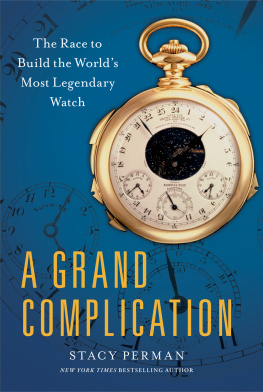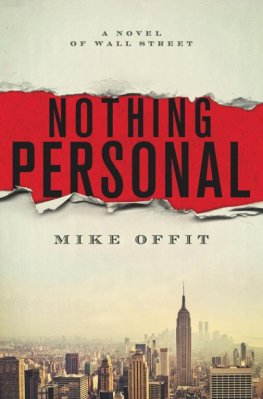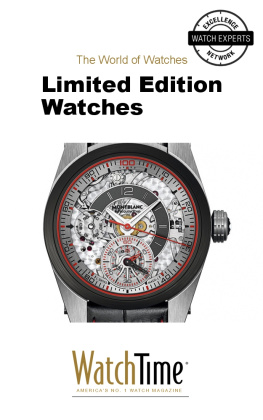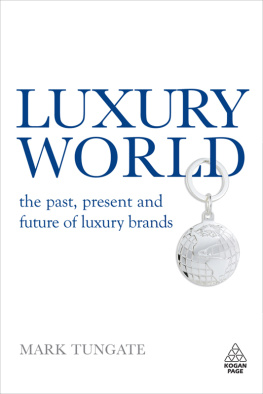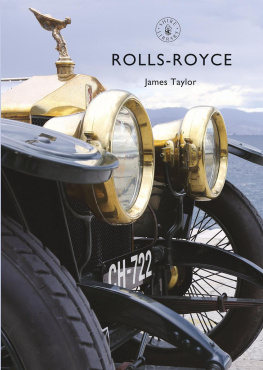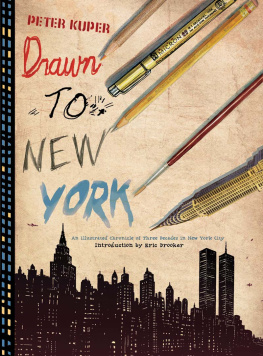Thank you for purchasing this Atria Books eBook.
Join our mailing list and get updates on new releases, deals, bonus content and other great books from Atria Books and Simon & Schuster.
C LICK H ERE T O S IGN U P
or visit us online to sign up at
eBookNews.SimonandSchuster.com

CONTENTS
For E. and M .
CHAPTER ONE

Lot 7
Obsession is a demanding mistress. On December 2, 1999, Philippe Stern, president of the venerable Swiss watchmaker Patek Philippe, found himself once again in her grasp. Keeping his steely Genevese reserve, he glanced at his watch, an impeccably crafted Patek Philippe, purportedly the perpetual calendar made in 1943, the one given to him by his father, Henri, who had preceded him as president. At sixty-one, Stern remained the very picture of understated elegance. A gentle man with thinning white hair, he had quietly slipped away from his office at the companys headquarters in Plan-les-Ouates, a sleepy village on the outskirts of Geneva, well before the appointed hour for the auction of the legendary Supercomplication, the most exquisitely complex mechanical watch ever created. Given the time, it was probably best to take the telephone call from his familys villa in Anires on the shores of Lake Geneva. In any event he would be more comfortable there.
The time quickly approached 8:30 p.m., nearly 2:30 p.m. in New York City. There was still some time before the auction began. It had been thirty years since the Supercomplication had last surfaced. Having already eluded the family once, the moments until bidding opened were relatively short.
Outside, the wind scythed across the lake in the spectral dark of winter. Here on Lac Lman, Stern had won a record seven regattas as a young sailor. A fierce competitor, he had also been a member of the Swiss national ski team. Along with his wife, Gerdi, herself a European mushing champion, Stern had competed in international dog sled races. The roster of pastimes enjoyed by the head of one of the oldest Swiss watchmakers, as it had been noted, all revolved around beating the clock. Stern had once described his hobbies as good business training, saying that they had taught him to go fast and take risks sometimes.
With the anticipation of victory, Stern put the telephone to his ear. Four thousand miles away, his aide-de-camp Alan Banbery was waiting for him.
Everyone who was anyone in the insular world of watch collecting filed into Sothebys ten-story glass-and-steel tower at 1334 York Avenue on Manhattans Upper East Side on that unseasonably warm afternoon. Just three weeks before Christmas, thermometers registered 60 degrees. At the Botanical Gardens, fragrant white blooms had broken out five months prematurely, and a ring of yellow forsythia blossoms graced the city with a touch of spring. As the mercury soared, so did the stock market. The Dow pushed past 11,000, marking the end of the millennium with record gains. The entire city appeared to levitate on its great good fortune. Watching the buoyant crowd descend upon Sothebys, a betting man could wager with ease that, before the day was over, more than one record would be broken.
As in previous years, the major auction houses dangled before an excitable audience the spectacle of record-smashing greatness for paintings, jewels, and objets dart, all with impeccable provenance or rarity. Each season brought an increasing fervor. A daisy chain of superlatives wrapped around each sale. The items featured were not just rare but extremely rare . They were not merely important but the most important . More than offering desirables of a certain vintage, the auction houses were peddling history bound in shiny catalogues and generated in regularly scheduled cycles. And the press and public responded like hounds to blood.
For weeks, expectations followed the Dow over Sothebys Masterpieces of the Time Museum. Eighty-one watches and clocks were set to go on the block. Culled from the 3,500-piece collection of Seth G. Atwood, a wealthy entrepreneur and something of an eccentric, these were some of the most extraordinary and important timepieces created since man began calculating the minutes and hours and fashioning devices by which to measure them. A quick rifle through the handsomely appointed catalogue yielded numerous affirmations that the auctions billing offered more than hyperbole. Sometimes sales catalogues are mutton dressed as lamb, one Sothebys veteran dryly noted at the sale. This was not the case.
By any measure the sale was unprecedented. Fascinated with the art and the science of time, Atwood had become one of the worlds most significant collectors and horological scholars. He hailed from an old-line Illinois family that made its fortune in manufacturing, banking, and real estate, which afforded him the leisure to pursue his interests wherever they took him. He had spent the past three decades circling the globe, cherry-picking the most important clocks and watches in history, mounting a private collection that came to rival that of the British Museumin importance if not scope. To house his collection, Atwood had constructed the Time Museum, located in his hometown, far from all known capitals (horological or otherwise), in the basement of his Clock Tower Inn in Rockford, Illinois, a green little pocket of nowhere straddling the Rock River, off Interstate 90.
While universally acknowledged as an endearingly kind and charming fellow, Atwood had rightfully earned a reputation as a bull in the worlds china shop of clocks. Rivals collapsed when he was in the game. And once a timepiece was in Atwoods possession the game was over. Knowledgeable horophiles accepted that it was as likely that the sun would change course and rise in the West as that Atwoods collection could ever be broken up and sold in lots. Yet at age eighty-two, Atwood had resolved to do just that. He was shutting down his museum (a process that would be filled with a number of unforeseen twists and turns and take several years) and, somewhat unsentimentally, deaccessioning its priceless contents.
Few could recall an auction of this caliber and range. Atwoods assemblage represented an astonishing array of ancient astrolabes, astronomical chiming clocks, musical automata, and other devices of wonder from every period, important watchmaker, and country from the beginning of timekeeping. It was mind-blowing, described one British dealer who arrived with instructions to bid on a number of the lots on behalf of his deep-pocketed clients. Just looking at it set the heart aflutter.
Lot 22 contained the famous Ormolu-mounted red boulle Sympathique no. 128, made in 1835 by the House of Breguet for the Duc dOrlans. Watchmaker to Louis XVI, Napoleon, Marie Antoinette, and the sultans of the Ottoman Empire, the Swiss-born Parisian Abraham-Louis Breguet remains the greatest watchmaker in history. It was Breguet who invented the tourbillon, circa 1795, an ingeniously delicate and tiny gyroscope-like device that turns about every minute to compensate for gravitys pull on a movement, dramatically improving accuracy and revolutionizing timekeeping. The wittily inventive Sympathique was designed with a removable pocket watch that rested in a cradle atop the main clock. A series of pins locked the pocket watch into position, while overnight a mechanism inside the clock movement rewound, readjusted, and reset its companion with jumping hours, a quarter repeater that chimed precisely on the quarter hour, and a power reserve indicator. The clock was one of only eleven ever produced.
Even in the seventeenth century, when the manufacture of any timepiece was far from routine, the final lot, the Tompion no. 381, was quite something. A gilt-brass, mounted red tortoiseshell table clock featuring both grande sonnerie and quarter repeating chimes, it was one of only three such pieces manufactured by the brilliant seventeenth-century British clockmaker Thomas Tompion. The Englishman first earned a name in 1676 when King Charles II commissioned him to create two faultlessly accurate clocks for the Royal Observatory in Greenwich, which notably became the center of world time in 1884. By the time of Tompions death in 1713, the eminent clockmaker had become a national treasure and was buried with royalty in the nave of Westminster Abbey.
Next page
